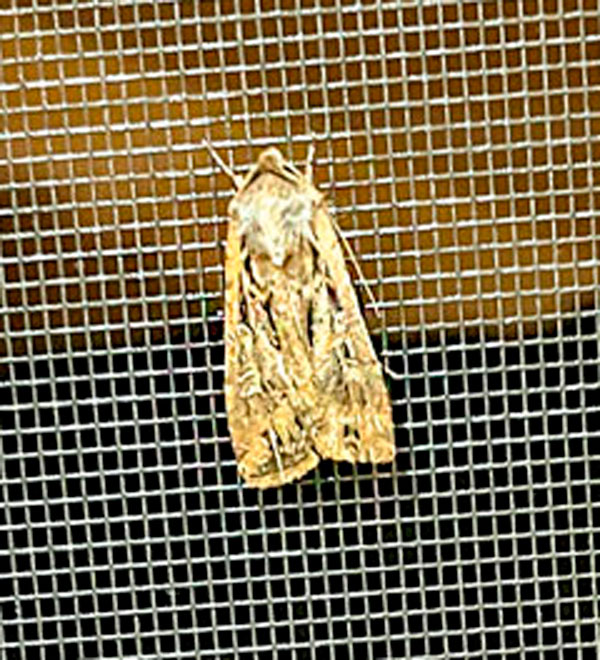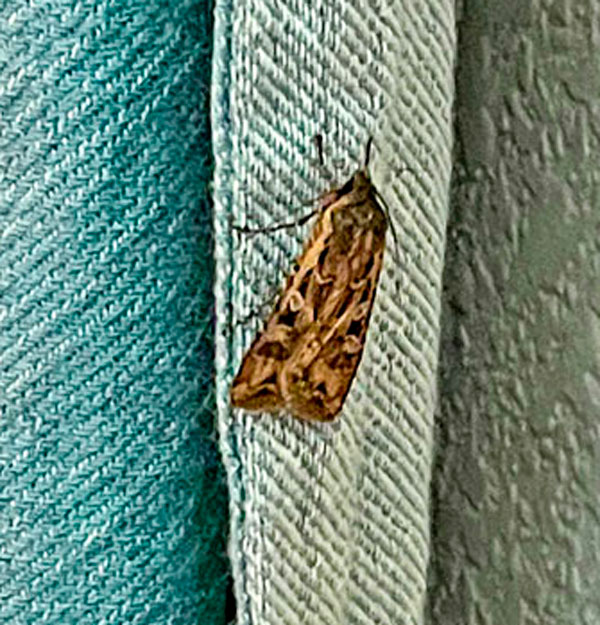Colorado living: Those pesky miller moths

Miller moths are generally brown or gray with dark and light markings on the wings. The patterns and colors of the markings vary from moth to moth.
Spring in Colorado often means the return of those pesky miller moths, swarming our lights and flying into our homes. Some years we see large numbers of them, and they can be a considerable nuisance.
Common in Colorado and several bordering states, miller moth is the popular name for the migrating adult stage of the army cutworm. The name comes from the fine scales on their wings that easily rub off and resemble the flour dust found on the clothing of a miller, someone who mills grain. The caterpillar’s name comes from its habit of cutting plants near the ground and, when there is a large population, crawling around in army-like groups.
Army cutworms hatch in late summer and early fall, and spend the winter as partially-grown caterpillars. They prefer to feed on broadleaf plants but will also eat grasses, and in early spring might damage crops. Mid-spring, the fully-grown caterpillars burrow into the soil to pupate. The adult miller moths emerge roughly three to six weeks later.

Why do miller moths swarm some years and not others? Outbreaks of the army cutworm caterpillars can mean large flights of miller moths. Wet weather and extremely cold winter conditions may kill many caterpillars, leading to fewer miller moths. But it is largely unknown what determines the numbers of miller moths from season to season.
In the spring, miller moths migrate from eastern Colorado to higher, cooler elevations to the west. There, they settle to feed on the nectar from summer flowers before returning to lower elevations in late summer or early fall to lay eggs. The timing and duration of the flights vary, but in outbreak years, flights generally start between mid-May and early June and last about five to six weeks. The nuisance problems tend to last just two to three weeks, and a few actions can help control their accumulation. Before the migration, seal obvious openings to the house, especially around doors and windows. Miller moths are attracted to lights, so reduce lighting at night in and around the home, or substitute with non-attractive yellow lights.
Miller moths provide some ecological benefits: the caterpillar stage is food for predatory ground beetles; the adult moths help pollinate flowers and are food for bats; and the moths are also an important, fat-rich part of the diets of grizzly bears.
Both the caterpillars and moths serve as food for many birds. During the swarming season, a common sight at intersections is a congregation of birds, such as swallows and house sparrows, flitting around feeding on miller moths. The moths are also an endless source of entertainment for house cats.
For more information, visit extension.colostate.edu and search “miller moths.”
Article and photos by Susan Helton